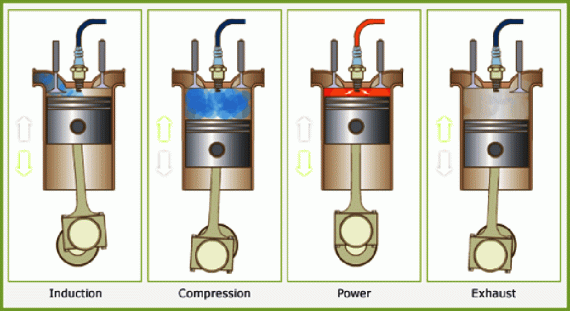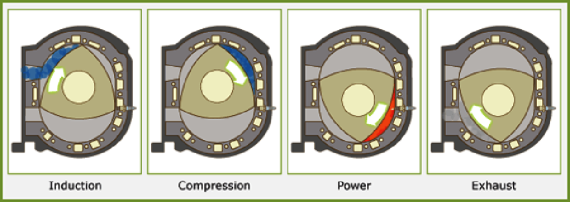Most modern internal combustion engines work on a four-stroke cycle; that is, a complete cylinder cycle consists of four discrete strokes, as described below. Other types of engines can have very different stroke cycles.
Induction / Section Stroke :
The induction stroke is the first stroke in a four-stroke internal combustion engine cycle. It involves the downward movement of the piston, creating a partial vacuum that draws (allows atmospheric pressure to push) a fuel/air mixture into the combustion chamber.
In a reciprocating engine, that portion of the cycle when the pistons move from TDC (top dead center) to BDC (bottom dead center) and the fuel-air mixture is drawn into the cylinders.
Compression Stroke :
The compression stroke is the second of four stages in an otto cycle or diesel cycle internal combustion engine.
In this stage, the mixture (in the case of an Otto engine) or air (in the case of a Diesel engine) is compressed to the top of the cylinder by the piston until it is either ignited by a spark plug in an Otto engine or, in the case of a Diesel engine, reaches the point at which the fuel which has been injected spontaneously combusts, forcing the piston back down.
Power stroke/Expansion Stroke :
A power stroke is, in general, the stroke of a cyclic motor which generates force. It is used in describing mechanical engines. This force is the result of the spark plug igniting the compressed fuel-air mixture.
Exhaust stroke :
The exhaust stroke is the fourth of four stages in a four stroke internal combustion engine cycle. In this stage gases remaining in the cylinder from the fuel ignited during the compression step are removed from the cylinder through an exhaust valve at the top of the cylinder. The gases are forced up to the top of the cylinder as the piston rises and are pushed through the opening which then closes to allow fresh air/fuel mixture into the cylinder so the process can repeat itself.

